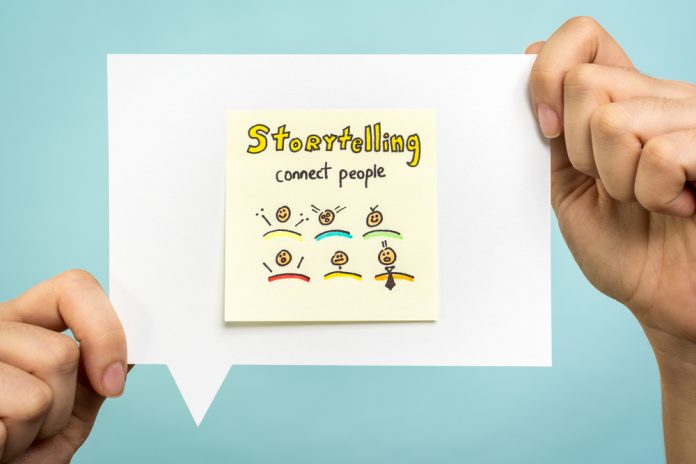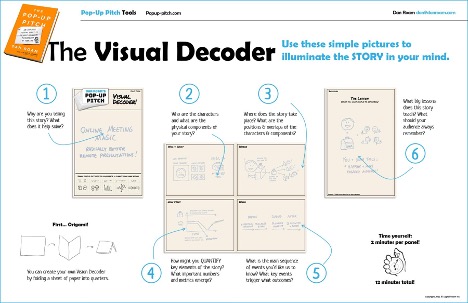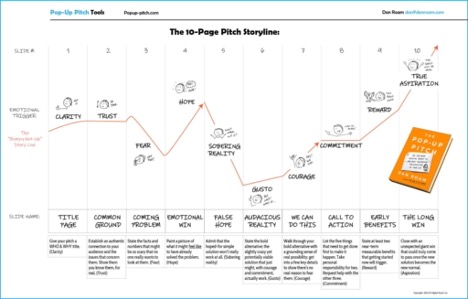
It’s clarifying, reassuring and human, the perfect antidote to uncertain and complicated times. We always need stories. But we need them now more than ever.
How can we keep training engaging? How can we keep people involved, despite living on our screens and in remote meetings, despite the confusion and unease?
It’s the power of storytelling that keeps things new, fresh, relatable and worth being engaged in.
The best way to train others is to use a story, and yet when we learn about training we never really learn how to convey our thinking in this way.
People who train others for a living need a story that is motivating, engaging enough to get students to want to stay on the video conference to learn more.
Let’s create your story.
You will need to think in two ways:

The first is visual.

The second is verbal.
Visual
If you begin by sketching the story you want to tell, your story will be more memorable. Drawing and visual learning unleash the unexpectedly wonderful and rich ideas already floating around inside your brain.
You don’t know where to start, or how to draw? I’ve created a special “what to draw” tool called The Visual Decoder. This is not a tool for artists. It’s a tool to help you think and makes it really easy to follow. It’s orders of magnitude better and more effective than words on a page.
Verbal
Hearing a simple story makes your audience’s brain align. It creates a bond. When you hear a story your brain releases cortisol, dopamine, and oxytocin, the chemical equivalents of memories, emotional responses, and empathy.
To create your powerful, time-tested story I have created a second tool: a fill-in-the-blanks template I call the ten-page pitch.
The combination of these two ingredients results in what I am calling The Pop Up Pitch (the title of my recent book.)
When you are done, your pop-up pitch will result in a ten-page presentation that tells your whole story in about seven minutes. It will provide the perfect level of insight to captivate an audience that is distracted and overwhelmed. And, the format is flexible, which means you can easily share your story in a follow-up email.
Make your training the best part of everyone’s day.
Want to try it?
The visual decoder:
- Cover/Title – name the problem
- Who – draw the characters
- Where – draw a map or place
- How many?
- When?
- Back cover/lesson learned

You will fill in these panels by drawing them.
And now, your ten-story pitch:
- Title page – clarity
- Our common ground – trust
- The coming problem – fear
- An emotional win – hope
- The false hope – sobering reality
- A fairly audacious reality – gusto
- We can do this for real – courage
- Our call to action – commitment
- Early benefits – reward
- The Long win – trus aspiration
If you follow these steps, you will captivate your audience and leave them asking for more.

I hope you find using this process easy and fun. I hope it changes the way you do your training and that it becomes a permanent fixture in your training toolbox.



